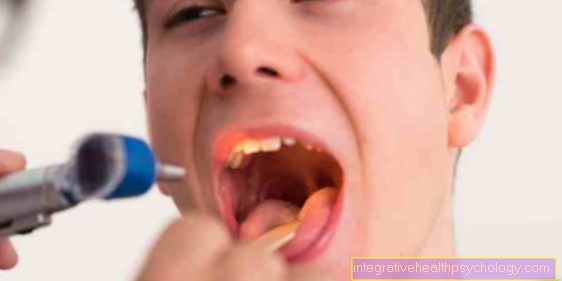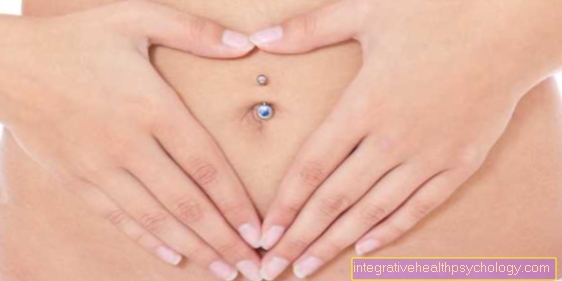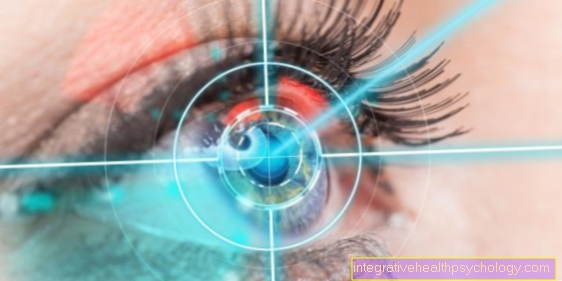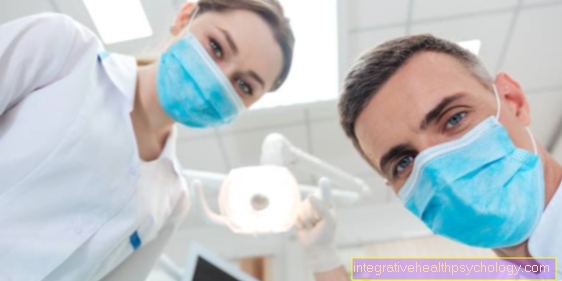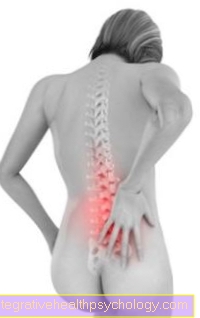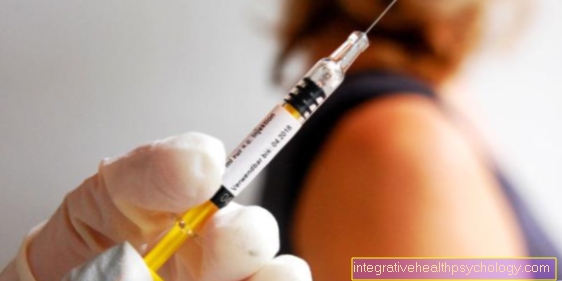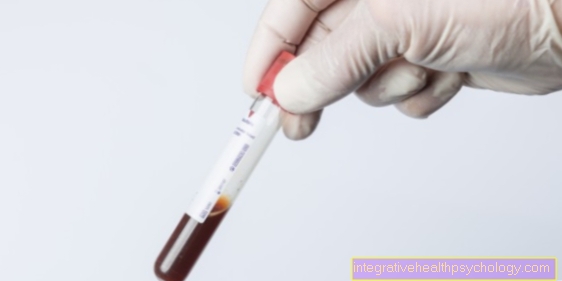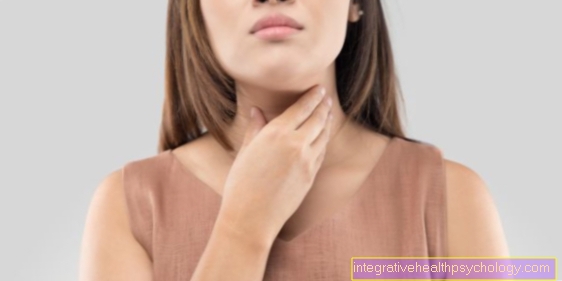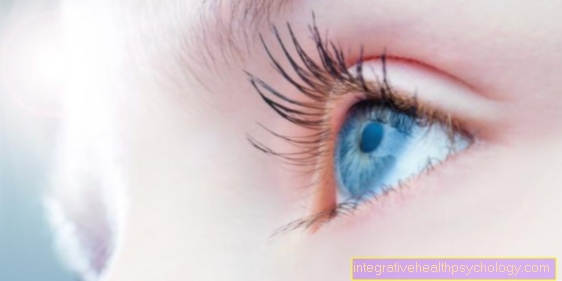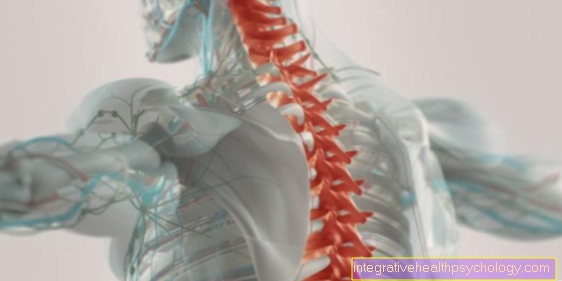Pigment disorder from taking the pill
synonym
Chloasma, melasma
introduction
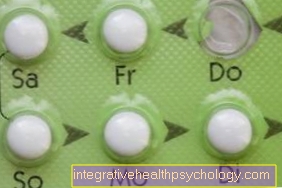
The occurrence of pigmentation disorders due to the pill occurs in almost 10-20 percent of patients who take the pill regularly or permanently. These are primarily pigment disorders in the face and pigment disorders in the neck.
The pigmentation disorder usually manifests itself in flat, brownish areas of skin in the area of the cheeks, forehead, chin, upper lip, bridge of the nose and temples. It is too strong a coloration (pigmentation) of the skin, which is also known as hyperpigmentation. The pigment disorder is mostly distributed symmetrically. The pigment disorders can also occur more frequently in the area of the forearms.
The skin change has a purely cosmetic expression. There is no pain, itching or other symptoms.
The excessive pigmentation when taking the pill is also called melasma or chloasma. More precisely, the term melasma is used for pregnant women and chloasma for other hormone-related pigment disorders of various causes.
root cause
The The cause of the pigmentation disorder caused by the pill is hormonal conditionally. There are so-called in the pill Estrogens, female hormones that can influence the production of pigments in the skin.
There are various assumptions about the exact effect that female hormones have on pigment-forming cells.
Some assume that the oestrogens stimulate the pigment-forming cells (melanocytes) to multiply or divide become. Other sources suggest that the Melanocytes stimulated by the female hormones to produce pigments when exposed to sunlight become.
There are 2 types of pigments red pheomelanin and the black eumelanin.
The melanocytes are located in the lower layers of the skin so that they Pass on dye to the upper cells, which Horn cells call. These horny cells are shed from time to time and regenerated so that the Pigment disorder quite reversible is when the cause of the increased pigment production has been eliminated.
So it now happens that in some skin areas more pigments are produced, which are deposited in the skin and that Skin area darker than the surrounding skin area discolor.
In addition to the female hormones, the Influence of UV radiation intensify the pigmentation disorder, so that it is recommended Avoid excessive sun exposure or visits to the solarium, with high sun protection factorn or the To take the pill in the eveningso that the estrogen level is lower during the day.
Another risk factor that can favor the pigment disorders are Thyroid disease. It also stands stress suspected that Production of the hormone called melanocyte-stimulating hormone (MSH) and thus to stimulate the hyperpigmentation.
Other risk factors are increased Birthmarks, taking various cosmetics, medicines, perfumes.
It can also be observed that people heaped out warm climatic zones have an increased risk of pigmentation disorders.
Since this is a hormone-related effect, a similar form of pigment disorder also occurs in the pregnancy because more female hormones are produced here too.
Even when taking others preparations containing estrogen, such as the Menopause, can trigger this type of pigment disorder.
Finally, there is one more when taking the pill genetic risk present to suffer a pigmentation disorder while using this form of contraception.
therapy
In principle they are Pigment disorderswho are taking the pill arise completely harmless and do not require any therapy. However, one must not underestimate the suffering of those affected and can initiate treatment steps from an aesthetic point of view.
Basically, the treatment should be carried out by a experienced dermatologist to avoid scarring or further irregular pigmentation.
First of all, one is prophylactic Avoidance of the risk factors already mentioned above make, for example a Sunscreen with a high sun protection factor to use or get sufficient to protect against strong sunlight. In addition, the skin must be pre- and post-treated in a disciplined manner after one form of treatment. Extensive sunbathing or visits to the solarium should be avoided. A Sun protection factor of 30-50 is to be applied in summer. There are also special creams that are massaged in to guarantee good post-treatment and maintenance of the skin's appearance.
On the one hand, there is a simple cosmetic option well covering skin makeup which often sufficiently compensates for the color differences.
If necessary, to Camouflage products can be used for an even stronger cover.
There are other cosmetic products in the form of acidic peels. On the one hand, the acids cause the upper horn cells and thus the pigment to slough off, and on the other hand, the new production of the pigment is reduced.
However, with this form of treatment, sufficient pretreatment of the skin for 2-3 weeks is necessary. It is important to avoid exposure to the sun and to refrain from smoking during therapy. However, here the acids penetrate deep into the skin, so that it is not necessarily a skin-friendly alternative acts.
This also counts to chemical peelings Alpha hydroxy acid peelingwhich causes blistering of the skin. The bladder then detaches and the pigment disorder detaches.
You can also try the hyperpigmented ones To whiten areas of skin. Plus there is different creams with different substances such as tretinoin, hydroquinone, arbutin, alphahydroxy acid, kojic acid, trichloroacetic acid, ascorbic acid, glycolic acid, azelaic acid, adapalem, liquiritin, niacinamide and B-resorcinol.
B-resorcinol can be done within about 4 weeks a clear brightening affect the affected areas of the skin. B-resorcinol achieves this effect through a Inhibition of an enzyme called tyrosine kinase. The enzyme tyrosine kinase is jointly responsible for the production of the skin pigment.
At Arbutin it is a natural source of hydroquinone. It is not quite as effective as the industrially produced hydroquinone and is often launched in Asia. Hydroquinone is prescription only and may currently not be sold in the EU, as it is suspected of causing toxic reactions.
Kojic acid is also not and will not be available in many countries in the Japanese market offered.
Ascorbic acid or. vitamin C is also considered potent skin whitener and is often used in creams combined with other substances.
Another form of treatment is that Laser therapy, fall under Fraxel and Erbium YAG lasers. This is also considered to be one of the most effective methods. The laser irradiation ensures that the pigments are crushed, which can then be removed by immune cells. Here it comes to Use of high energy light.
Depending on the severity, you have to allow the laser to penetrate the upper layers of the skin and, in more severe cases, deeper ones, so that the pigments that are still transported from the bottom up can still be reached.
However, laser treatments are mostly still available relatively expensive compared to other treatment methods. Besides, it can after treatment to the occurrence of further overpigmentation as a result of inflammatory reactions come. Furthermore you can Burning skin, Skin irritation and Infections occur.
There are also those Cold treatment (Cyrotherapy), which causes the upper layer of skin to freeze, which then dies and thus eliminates the pigmentation disorder.
It can also cause pigment spots surgically carefully sanded off become.
Due to the treatment methods, the skin is usually still irritated afterwards and should be protected from irritations such as excessively harsh care products or too much sunlight.
Of course, there is always another option, on a different one Contraceptive method to switch or try another type of pill.

